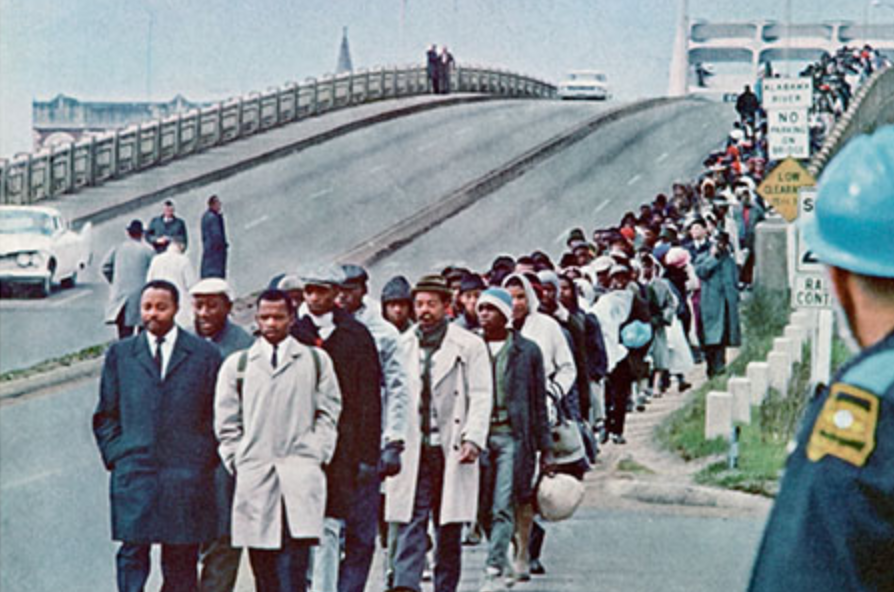Jon Meacham delivers a rich account of a life built on protest and hope
By Michael Ray Taylor, for Chapter16.org
Just over a month after John Lewis died from pancreatic cancer at the age of 80, noted biographer Jon Meacham has published His Truth Is Marching On: John Lewis and the Power of Hope. The death of the Georgia congressman — a civil rights icon and a hero to many Americans — prompted nearly two weeks of national mourning at a level usually reserved for heads of state. His final funeral service, held at Atlanta’s famed Ebenezer Baptist Church, was attended by former U.S. Presidents Bill Clinton, George W. Bush, and Barack Obama, who gave the eulogy. An ailing Jimmy Carter sent a message to the service.

Meacham, who lives in Nashville and Sewanee, won the Pulitzer Prize in biography in 2009 for American Lion: Andrew Jackson in the White House and has published a string of books since, most recently The Glory of Hope, a personal meditation on the final words of Jesus. Although timely, the Lewis biography is not a recent undertaking. Meacham writes in an author’s note that he first met Lewis in 1992 and subsequently spoke with him many times, in person and by phone. The two conducted a number of personal interviews in 2020 for this long-planned book. Originally slated for publication this October, the release of His Truth Is Marching On was moved up after Lewis’s death.
“This is not a full-scale biography,” Meacham explains. “It is, rather, an appreciative account of the major moments of Lewis’s life in the movement, of the theological understanding he brought to the struggle, and of the utility of that vision as America enters the third decade of the twenty-first century amid division and fear.”
The story of Lewis’s life, beginning on a sharecropper’s farm in Troy, Alabama, where as a child he delivered sermons to chickens, is familiar ground. Lewis himself told it in a 2009 autobiography and in an award-winning series of graphic novels, starting with March in 2013. What Meacham brings to the tale is a keen eye for the historic moment, as well as reverence for the religious faith that drove Lewis to a life of personal sacrifice. Meacham writes of the 17-year-old Lewis arriving at college in fall of 1957:
Seminary was liberating. “By going to school in Nashville, Tennessee — many, many miles away from my parents in Alabama — I felt freer to find a way to get involved,” Lewis recalled… The primary activity — the only activity, really — was summed up in a question James Bevel, a charismatic fellow student, put to the newcomer from Troy on their first meeting: “Can you preach, boy?” It was all that mattered. Preaching was also free, and Lewis didn’t have money for much else.
Protest, Lewis soon discovers, is also free. When another student tells him to “stop preaching the gospel of Martin Luther King and start preaching the gospel of Jesus Christ,” Lewis sees that as a “false choice,” deciding, “The words of Jesus had to be put into action.” He would soon meet King personally and through him become a civil rights leader, not just of students in Nashville but of college students across the nation. He joined the Nashville sit-ins from February 13 to May 10, 1960. (When Lewis visited Nashville in 2016, he recalled the lunch counter in Woolworths, telling Chapter 16, “On February 27, 1960, when the group downstairs had been arrested, we came downstairs to join them and get arrested and go to jail. That was my first one, my first arrest.”)

His Truth Is Marching On: John Lewis and the Power of Hope
By Jon Meacham
Random House
368 pages
$30
While his most famous moment of protest occurred in 1965 during the “Bloody Sunday” march in Selma, Alabama, nonviolent protest remained a way of life for Lewis until his death. He was arrested five times for protesting as a member of Congress, and he led a House of Representatives sit-in for gun control legislation in 2016. In his final year, Lewis returned to Selma to walk across the Edmund Pettus Bridge on the 55th anniversary of Bloody Sunday, and he later participated in several Black Lives Matter marches.
“We truly believed that we were on God’s side,” Lewis told Meacham of his life of protest, “and in spite of everything — the beatings, the bombings, the burnings — God’s truth would prevail … But you have to believe that it can be real, that it can be more than a dream.” His Truth Is Marching On combines careful reporting, historic photographs, and detailed notes and appendices, but the book ultimately shines brightest as a story of how one man made a difference by believing in justice and offering hope for a nation in difficult times.

Michael Ray Taylor is author of Hidden Nature: Wild Southern Caves, a mixture of memoir and subterranean natural history. He chairs the communication and theatre arts department at Henderson State University in Arkadelphia, Arkansas.
Chapter 16 is the virtual Tennessee Center for the Book, an independent affiliate of the Library of Congress’s National Center for the Book. Humanities Tennessee is an independent affiliate of the National Endowment for the Humanities. This work is licensed under the Creative Commons Attribution-NonCommercial-NoDerivatives 4.0 International License. To view a copy of this license, visit creativecommons.org.

